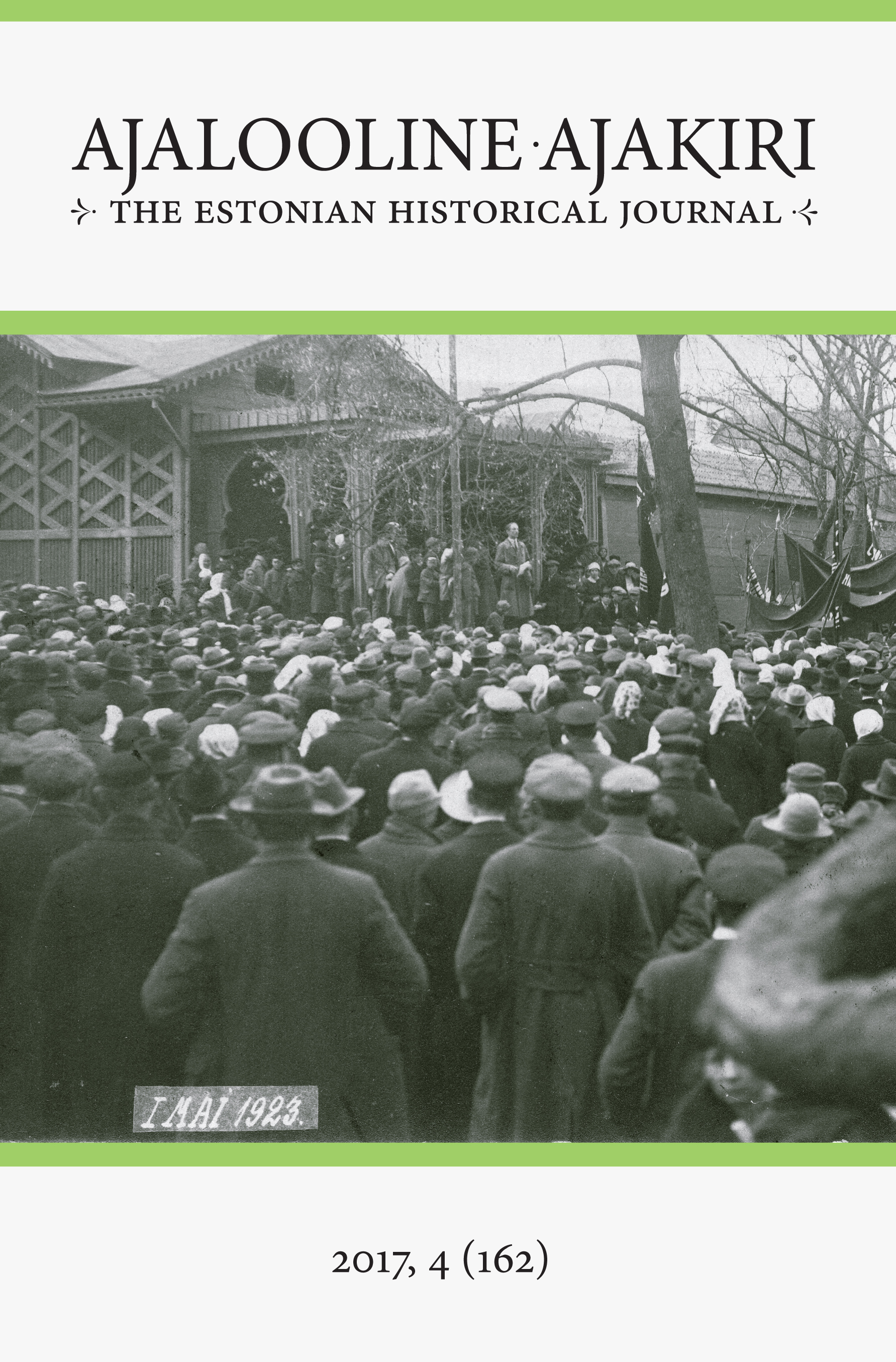Kodu- ja väliseestlaste vahelise kultuurisuhtluse institutsionaalne raamistik Nõukogude Liidu kultuuridiplomaatia kontekstis [Abstract: The institutional framework of cultural communication between Estonians in the homeland and in exile in the context of Soviet cultural diplomacy]
DOI:
https://doi.org/10.12697/AA.2017.4.02Keywords:
Exile Estonians, Soviet Union, Estonian SSR, Cold War, cultural diplomacyAbstract
During the Cold War, a massive organisation for cultural diplomacy was developed in the Soviet Union as well as in other countries, especially in the United States. Exile Estonians were drawn into the middle of the cultural Cold War that evolved between the two superpowers. In this article, the institutional framework for influencing exile Estonians is analysed in the context of Soviet cultural diplomacy. A frequently confusing fact is that two major organisations – firstly, the Estonian Society for Friendship and Cultural Relations with Foreign Countries and secondly, the Society for the Development of Cultural Ties with Estonians Abroad – were involved in the Soviet efforts aimed at influencing émigrés. In some cases, these organisations are even mixed up. This article clarifies the situation and shows how these organisations were formed, and how they were related to each other. However, the main aim of the article is to show how and why cultural communication with foreign countries and influencing exile Estonians were two sides of the same coin, from the point of view of the Soviet authorities, and how the respective organisations were therefore tightly intertwined. Two important conclusions were drawn: firstly, institutions were shaped by the fact that exile Estonians, as well as Soviet diaspora overall, were an inconvenient reality for the Soviet Union because they hampered Soviet propagandistic efforts in their countries of residence. Thus, when dealing with diaspora, the aim of institutions for cultural diplomacy was on the one hand to achieve a positive, or at least neutral, attitude towards the Soviet Union within exile Estonian communities, and on the other hand to reduce the influence of émigrés on the population of their countries of residence. Secondly, during the Cold War, the Soviet Union’s diaspora policy gradually switched from repatriation to propaganda and influence through cultural communication. These political changes were conspicuously reflected in the structural transformation and name changes of the organisations analysed in this article. The Society for the Development of Cultural Ties with Estonians Abroad was formed in 1960 as a section of the Estonian Society for Friendship and Cultural Relations with Foreign Countries and was then gradually disengaged until their final separation in 1968. Among other things, this was caused by the thaw period with a growing number of contacts across the Iron Curtain, and an increased workload in both organisations. Due to overlapping fields of activity, the two organisations maintained their cooperation until the very end in the early 1990s.Downloads
Download data is not yet available.

